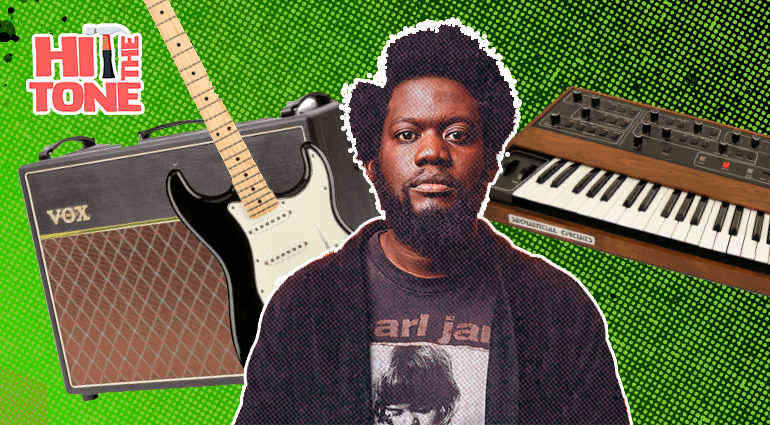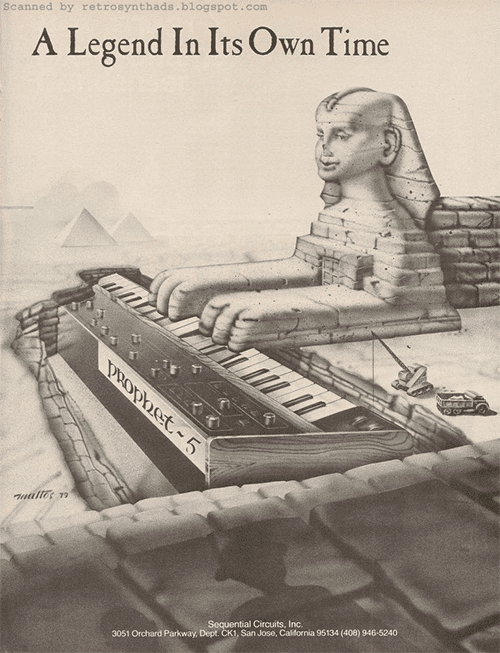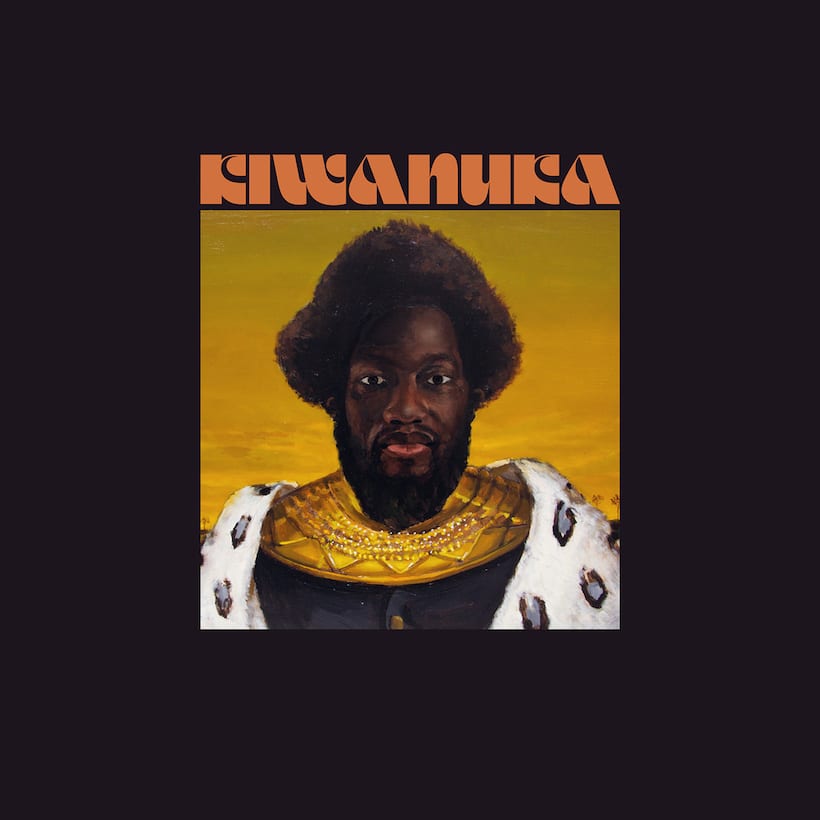
We’ll help you sound as cool (or close to as cool) as Michael Kiwanuka
You mean the guy who revitalised soul music?
Exactly. The kid who jumped into the limelight as a new kind of Terry Callier (a perfect illustration of this comparison is his song “Home Again“) recorded his second album after Kanye West blew his mind and motivated him to come up with the album Love & Hate (2016, Polydor). This release showed us a giant Kiwanuka, emerging from the humble beginnings of his debut and embracing new magnificent directions. Basically, this Londoner knows what he’s doing. In this new stage, accompanied by the great producer Danger Mouse, Kiwanuka brings together giants the size of Bill Withers, Curtis Mayfield or even Isaac Hayes. Their proposal goes through soul (from Stax to Deep Soul), gospel, folk, funk or psychedelia without forgetting that we’re reaching the second decade of the 21st century. In Kiwanuka (2019, Polydor), his third album, the Brit adds to his tandem with Danger Mouse the figure of producer Inflo to confirm what he showed us in Love & Hate: a brilliant soul, simultaneously modern and classic, appealing in unison to the hips, heart and brain. Not an easy task. In this article we will try to direct you in how to record with a certain “old sound”, a certain vintage tone. Come on, let’s go!
What we mean when we talk about vintage
You are currently viewing a placeholder content from Youtube. To access the actual content, click the button below. Please note that doing so will share data with third-party providers.
Do us a favour and listen to the song above, “Solid Ground“… See? That’s what we’re talking about. How can you get that sound? With the arrival of Danger Mouse into his life, Kiwanuka added some elements to his usual accompaniment, which rarely went much further than an acoustic guitar. One of these elements was a Prophet 5 synthesizer made in the late ’70s. This is what he said himself: “It’s a sound that dozens of musicians have used, but it’s new to me and it’s beautiful”. We are talking about a synthesizer so legendary that it even has its own tribute website.

Another staple in Michael Kiwanuka’s lineup since that encounter is the use of vintage guitars, such as the Fender Stratocaster, one of the oldest guitars in history and yet still used by countless artists.
Wait, wait, you’ll see where we’re going with this. Danger Mouse was crowned a genius when he decided to mix Jay-Z music with Beatles samples. That mix of tradition and avant-garde allowed him to crown himself as the king when it came to dreaming up music that sounded like a pure 21st century but with an old flavour. At the time of elaborating this sonorous miracle, the producer used samplers like the ones below:
- Korg Electribe Sampler
- Roland MC-707
So, the three examples above are three different ways to achieve classic sounds: the first, instruments manufactured in past decades, the second, instruments designed between the ’60s and ’80s that are still being manufactured today or the third, instruments currently being manufactured which can create retro sounds through synthesis or sampling. The third, obviously, is the one that technological advances allow us: processing stations, samplers, etc. In this article we will focus on the second way (the third one deserves an article on its own). Why? Let’s be honest…who has a Neve 8078 in their garage, collecting dust and growing mould?
You are currently viewing a placeholder content from Youtube. To access the actual content, click the button below. Please note that doing so will share data with third-party providers.
How to make your guitar sound vintage
There is a maxim when it comes to getting a classic sound that says that no post production will convincingly modify what comes out of your instrument. That’s why it’s essential to choose good material in the first place. In the case of guitars, and assuming that you have the necessary means to pay for a strictly vintage model, it is usually recommended to aim for a clean and solid sound. Any of the models you have above – Gibson Firebird, Gibson Les Paul, Fender Telecaster or Fender Stratocaster – fit that profile. It is usually recommended not to abuse the volume and to play more with the tone and with the selection of pickups. Speaking of pickups, remember that there is a big difference between a guitar that incorporates single-coil pickups to another that comes with humbucker pickups. While the former provide a warm sound but emit a buzz at high volumes, the latter eliminate that buzz but produce a more robust sound. For something close to Michael Kiwanuka’s music, for example, a conveniently amplified single-coil pickup guitar would be very useful. Not convinced? Well, here’s Kiwanuka himself explaining why you should bet on a Strat:
You are currently viewing a placeholder content from Youtube. To access the actual content, click the button below. Please note that doing so will share data with third-party providers.
As for the strings, always look for nickel strings (such as the Ernie Ball 2221 or the Fender Hendrix Voodoo Child BE Nickel), which provide a warm, round sound. One of the secrets for strings to sound vintage is to literally give them some time. The more worn out (even dirty) they are the less shine they will have. Then you’ll be closer to the sound we’re looking for.
Well, it’s all done, isn’t it?
Oh no, absolutely not. Although it is essential that you use a guitar and some strings (no one would ever think of playing Michael Kiwanuka’s album with a Jackson with active pickups), you also have to choose your pedals wisely. There won’t be many, but keep them in mind. In many places you’ll read about the importance of adding a fuzz to your guitar, given our specific case, we will bet on overdrive, which generates a softer and warmer distortion. The configuration we are interested in consists of mixing the distortion of the amp with the characteristics (more sustain and warmth, less rawness) that overdrive offers. More than going crazy with the volume it’s more important to play with tone and gain.
OK, but which overdrive?
Well, look, any of the four that you see above (Boss BD-2w Blues Driver, Mooer Blues Crab, Xotic SL Drive or Joyo R-05 Maximum Overdrive) would be an interesting option.
- HyperFocal: 0
The four magic boxes above may help you get the vintage sound you’re looking for. On the top, with violet letters and red casing, we have the Electro Harmonix Holy Grail Max and the tc electronic Hall of Fame 2 to it’s right, two great exponents of the reverb pedal. We are talking about an effect that came to popularity and never faded, and that is present in practically any genre of music. Unless we want surf rock, it’s best to moderate it, opting for mid settings. On the bottom, with metallic casings, we have the Fender Tre-Verb and Behringer VD400, two delay pedals (also tremolo, in the case of the Tre-Verb) that will provide us with a sound with more edge. If you use it, remember one thing: little feedback! Otherwise, you’ll ruin that vintage sound.
Okay, now I’m ready…
No! You forgot the amp, dear reader. Where are you going without an amp? Well, frankly, nowhere. Meet (from left to right and from top to bottom) Supro 1605R Reverb, Vox AC30S1, Fender 65 Deluxe Reverb and Fender 57 Custom Deluxe. These four tube amplifiers are here to help you. The secret to getting the sound we’re looking for is not to go crazy with the gain. Remember that the old amplifiers didn’t have gain control, so we must look for warm sounds, with hardly any grain, and let the tubes do their magic.
Okay, then: clean guitar, single-coil pickups, nickel-wound strings, an overdrive, a reverb and a delay and a tube amp, right? That’s it, yes. But… what if you’re a singer?
Mics, I need mics!
It is not common to over specify voice recording when discussing vintage sounds. It is usual to use the same parameters we talked about (search for pure and warm sound, without excess brightness), but… there is nothing like ribbon microphones. What microphones? Ribbon. Let’s see: a ribbon mic consists, in short, of a piece of aluminum wrinkled in a certain way that moves between a pair of magnets that hold it. When the tape moves between the magnets, by means of magnetic induction, an electrical signal is produced that reproduces the sound that caused the tape to move. Pretty much the same principle as guitar and electric bass pickups. Well, mid-last-century, the ribbon mic was the king of the big studios. Everybody used them. Why did this stop? Well, because condenser microphones with their wide frequency response came into being. It turns out that ribbon mics produce an attenuation of frequencies from 14000 Hz. This (which translated into a less bright sound than that of their younger brothers) coupled with their delicate handling (the aluminum tape is usually two microns thick, very sensitive to hard blows) make them less desirable for some.
Why did they resurface? Because there are people who think that we’ve lost touch with technology, and that extreme perfection (and digitization) is not a good thing. One of the stars of the new analog revival is the ribbon microphone. Yes, there are imperfections, but what are we if not imperfect?
Above these paragraphs you have four interesting examples of ribbon microphones for recording vocals: the Coles 4038 Studio Ribbon, the t.bone RB 500, the Sontronics Delta 2 and the Golden Age Project R1 Tube active.
You are currently viewing a placeholder content from Youtube. To access the actual content, click the button below. Please note that doing so will share data with third-party providers.
Beware of the beasts that carry sticks
Everything can go to waste if we forget to pay close attention to the drums and drum playing. You can’t take care of all the above and suddenly appear with a modern (or futuristic) drum kit. It would be like seeing the Starbucks cup in Game of Thrones: an absolute fiasco! As well as taking a look at the various drum sets and drumsticks with flavours that exist, you have to keep in mind is that we are trying to reproduce the sound of a time when the drums were different from the current ones. Here are some examples.
- Remo 14″ Fiberskyn 3 Medium (FA)
- Remo 12″ Fiberskyn 3 Medium (FA)
Regarding skins: Synthetics were not used until the ’50s. In the past, leather skins were used that offered dark, warm tones and a great palette of sounds. A cheap option we can find today is the synthetic leather skins, like the ones you see above, the Fiberskyn by Remo.
- Aquarian 20″ Super Kick II Clear
- Vater VBVB BD Beater Vintage Bomber
The hole in the kick drum’s front skin began to be used in the ’70s. Also, the drums usually didn’t have anything inside them: a full and open sound was typical, only the technique and tuning changed between genres. In addition, it is advisable to use a felt or cork and synthetic wool mallet on the bass drum pedal, as it guarantees a softer sound.
- Meinl 16″ Byzance Vintage Crash
- Zildjian 20″ Kerope Ride
Regarding the cymbals: remember that the 20″ cymbals didn’t always exist. For example, if we want to get a swing sound, typical of the ’30s, we can’t use them. We should use small, light ones. Ride cymbals appeared in the early ’40s, and were much lighter than the current ones.
When recording a drum kit, we strongly recommend the Glyn Johns method, which you can find in Led Zeppelin’s recordings and explained in this article. To get an organic sound, typical of the ’60s and ’70s, it is also recommended to record the drums in wide and open places, so that the reverb is natural and, if necessary, try delays in the mics, to increase the sensation of a giant kit.
Conclusion
We said it towards the middle of this article: the effects and the recording methods have an influence, but if you want to sound close to what it sounded like in the ’60s and ’70s… you must generate that sound with your instrument. This statement is open to many interpretations. What’s for sure is that generating that sound implies much more than going to the nearest store and buying all the vintage instruments that you find. Once again, its’ all about listening to music, learning a language and a spirit and then releasing something that is only yours. Then you’ll be doing something more than just a style exercise, you’ll be doing something genuine.
You are currently viewing a placeholder content from Facebook. To access the actual content, click the button below. Please note that doing so will share data with third-party providers.
More InformationYou are currently viewing a placeholder content from Instagram. To access the actual content, click the button below. Please note that doing so will share data with third-party providers.
More InformationYou are currently viewing a placeholder content from X. To access the actual content, click the button below. Please note that doing so will share data with third-party providers.
More Information





































